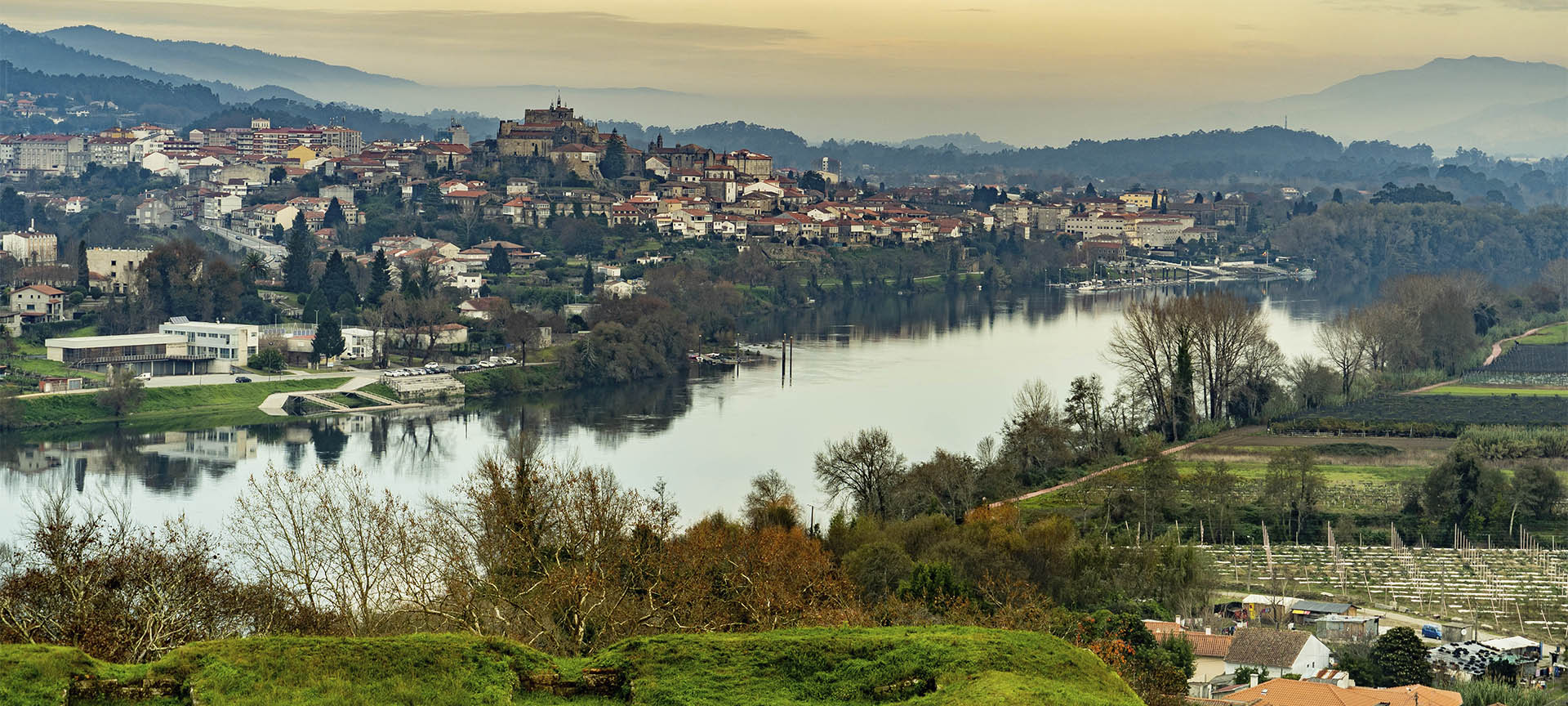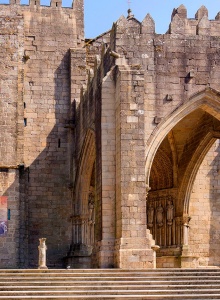
The city, which has been declared a Historic-Artistic Site, has had its heritage enriched over the centuries thanks to its strategic location.
Tui is, above all, a walled cathedral which emanated cultural, economic and military life. Always with an eye on neighbouring Portugal –sometimes a friend, sometimes an enemy-, it sits on a border which no longer serves any purpose: the modern motorway replaced the iron bridge –which is still standing and is one of its most emblematic images- and customs controls make no sense in the European Union. Tui is more peaceful for it, and as they stroll through its medieval streets, travellers can understand why the city has been declared a Historic-Artistic Site. Featuring among Tui's architectural heritage is the Romanesque and Gothic Cathedral, the churches of San Bartolomé –Romanesque- and San Telmo –baroque- and several miradors. The mountain of Aloia, near Tui, was the first place in Galicia to be declared a Nature Reserve, and is a perfect viewing point to take in the Vigo estuary and the Louro valley. This river flows into the Miño, the true key figure in the life of the city, forming a natural frontier with Portugal. In fact, all the routes which left the neighbouring country and which did not join the Ruta de la Plata would end up in Tui.
Debe activar Javascript para poder utilizar este servicio
What to visit
Select from the list or hover over the map to find out about points of interest.
Activa JS





